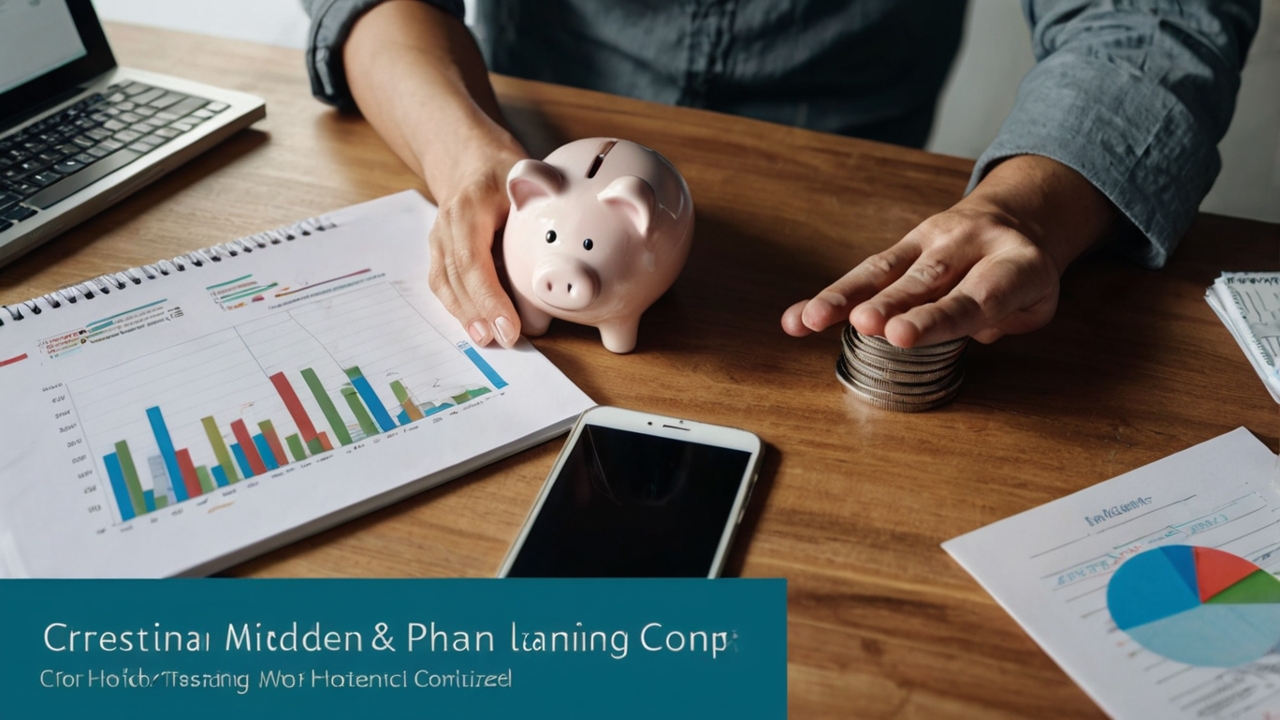Introduction: Why Do You Need a Personal Budget?
In today's fast-paced world with increasing consumer temptations, managing personal finances is more important than ever. A personal budget is not just a record of expenses and income; it's a roadmap towards achieving your financial goals, whether it's buying a house, saving for retirement, or simply getting out of debt. Without a clear budget, you may find yourself spending money without planning, leading to unnecessary financial stress.
Chapter 1: Defining Your Financial Goals
Before you start building a budget, it's essential to clearly define your financial goals. Do you want to buy a new car? Are you planning for early retirement? Are you aiming to pay off your debts? Defining goals helps you prioritize spending and saving.
- Short-Term Goals: Goals that can be achieved within one year, such as paying off a credit card or saving a specific amount for a trip.
- Mid-Term Goals: Goals that can be achieved within 2-5 years, such as buying a car or starting to save for a down payment on a house.
- Long-Term Goals: Goals that take more than 5 years to achieve, such as saving for retirement or your children's education.
Chapter 2: Tracking Your Income and Expenses
The next step is to track your income and expenses accurately. You can use budgeting apps, spreadsheets, or even a notebook to record every penny you spend. This helps you understand exactly where your money is going.
Expense Tracking Tools:
- Budgeting Apps: Such as Mint, YNAB (You Need A Budget), Personal Capital.
- Spreadsheets: Using Excel or Google Sheets.
- Traditional Method: Notebook and pen.
Example: Let's say you discover that you spend $150 a month on coffee and other beverages. This amount can be saved and used to achieve your financial goals.
Chapter 3: Analyzing Your Spending Patterns
After tracking your expenses for a month or two, analyze your spending patterns. Identify areas where you are spending too much and areas where you can reduce spending.
Categorizing Expenses:
- Fixed Expenses: Such as rent, loan payments, insurance.
- Variable Expenses: Such as food, entertainment, clothing.
- Emergency Expenses: Such as car repairs, medical bills.
Tip: Look for ways to reduce variable expenses, such as eating at home instead of restaurants, or looking for deals and offers before buying.
Chapter 4: Creating a Realistic Budget
Based on your spending pattern analysis, create a realistic budget that takes into account your income, expenses, and financial goals. Allocate a specific amount to each expense category and try to stick to this budget as much as possible.
Common Budgeting Rules:
- 50/30/20 Rule: Allocate 50% of your income to essential needs, 30% to wants, and 20% to savings and debt repayment.
- Zero-Based Budget: Allocate every dollar of your income to a specific category, so that your balance at the end of the month is zero.
Example: If your monthly income is $3,000, you can allocate $1,500 to essential needs, $900 to wants, and $600 to savings and debt repayment.
Chapter 5: Reducing Expenses and Increasing Income
To achieve your financial goals faster, look for ways to reduce expenses and increase income. This can include negotiating service bills, looking for a side job, or selling things you no longer use.
Ways to Reduce Expenses:
- Negotiate Service Bills: Such as internet and insurance bills.
- Cancel Unnecessary Subscriptions: Such as gym memberships or streaming services you don't use.
- Buy Products in Bulk: To save money in the long run.
Ways to Increase Income:
- Look for a Side Job: Part-time or freelance work.
- Sell Things You No Longer Use: Online or in local markets.
- Invest Your Money: To generate additional income.
Chapter 6: Saving and Investing
Saving and investing are key to building wealth and achieving financial independence. Start by allocating a portion of your income to saving regularly and invest your money in diverse assets to achieve meaningful returns.
Saving and Investment Options:
- Savings Accounts: Offer a simple return with easy access to funds.
- Fixed Deposits: Offer a higher return than savings accounts with a specific maturity period.
- Stocks and Bonds: Offer the potential for high returns, but also carry higher risks.
- Real Estate: A long-term investment that can provide rental income and appreciation in property value.
Tip: Consult a financial advisor to determine the best investment strategy that suits your goals and risk tolerance.
Chapter 7: Debt Repayment
If you have debts, it's important to develop a plan to repay them as quickly as possible. Debt weighs down your financial burden and hinders your ability to achieve other financial goals.
Debt Repayment Strategies:
- Snowball Method: Pay off the smallest debt first, then move on to the next smallest debt, and so on.
- Avalanche Method: Pay off the debt with the highest interest rate first, then move on to the next debt with the highest interest rate, and so on.
Example: If you have three debts: a credit card with a balance of $1,500, a personal loan with a balance of $3,000, and a car loan with a balance of $6,000. Using the snowball method, you would start by paying off the credit card first, then the personal loan, then the car loan.
Chapter 8: Review and Adjust
The budget is not static, but should be reviewed and adjusted regularly to suit changes in your income, expenses, and financial goals. Review your budget monthly or quarterly to ensure it remains effective.
Factors Requiring Budget Adjustment:
- Changes in Income: Such as getting a promotion or losing a job.
- Changes in Expenses: Such as increased rent or unexpected emergency expenses.
- Changes in Financial Goals: Such as changing retirement plans or buying a new home.
Chapter 9: Dealing with Emergencies
It is important to have an emergency fund to cover unexpected expenses, such as car repairs or medical bills. It is recommended to save enough to cover 3-6 months of basic living expenses.
Tips for Building an Emergency Fund:
- Allocate a portion of your income to saving in an emergency fund regularly.
- Avoid using the emergency fund except in cases of extreme necessity.
- Replenish the emergency fund after using it.
Chapter 10: Additional Tips for Achieving Financial Success
- Educate Yourself Financially: Read financial books and articles, and follow blogs and channels specializing in money and investing.
- Consult a Financial Advisor: To get personalized advice on managing your money.
- Be Patient and Persistent: Building wealth takes time and effort.
- Celebrate Your Achievements: Reward yourself when you achieve your small financial goals.
Disclaimer: This article provides general information about building a personal budget. You should consult a financial professional for personalized advice tailored to your financial situation.




